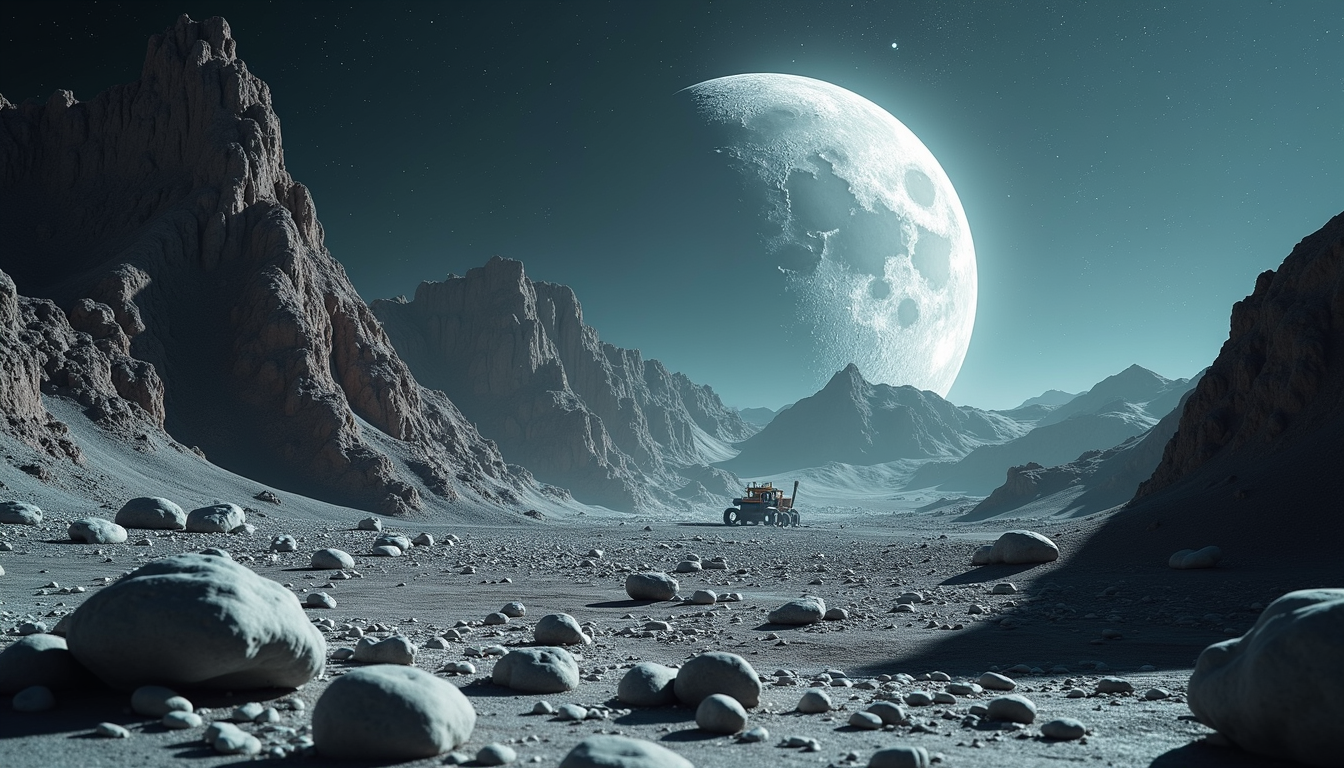The cosmos has always captivated the human imagination, and recent scientific advancements suggest that our lunar neighbor, the Moon, may hold untold wealth beneath its surface. With an estimated trillion dollars' worth of platinum lying in mining craters, the Moon presents an unprecedented opportunity for resource extraction. However, as interest in lunar mining intensifies, it also raises complex legal challenges that must be navigated.
The Allure of Lunar Platinum
Platinum is one of the rarest and most precious metals on Earth, often sought for its use in jewelry, industrial applications, and electronic devices. The fact that this valuable resource could exist in abundant quantities on the Moon is both intriguing and motivating for scientists and entrepreneurs alike.
Recent studies suggest that areas such as the lunar poles contain vast deposits of platinum-group metals, formed through billions of years of various geological processes. The Moon's surface, rich in crater formations, may well be a treasure trove of resources waiting to be harvested.
Practicality of Lunar Mining
When comparing lunar mining to extracting precious metals from asteroids, several advantages become clear. Gravity plays a significant role in resource extraction; the Moon's lower gravitational pull makes the logistics of transporting equipment and extracted materials less complex than off-world mining.
Furthermore, the Moon's proximity to Earth, at an average distance of about 238,855 miles, allows for relatively easier access. Current technology and advancements in robotic and automated systems make lunar mining increasingly feasible.
Additionally, the presence of other resources such as water ice in lunar craters adds another layer of practicality. Water can be used for life support, propulsion fuel, and even as a medium for processing minerals, which could enhance the economics of lunar mining operations.
Legal Frameworks and Challenges
As with any ambitious initiative, lunar mining presents a unique set of legal challenges. The Outer Space Treaty of 1967 currently governs international space law, stipulating that no nation can lay claim to celestial bodies. This poses a significant hurdle for prospective mining operations, as it is unclear how resources can be extracted and owned.
In the absence of clear regulations, conflicts may arise between nations and private companies looking to stake their claim in lunar mining. Who owns the platinum extracted from lunar craters? Can a company monopolize resources on the Moon? These are pressing questions that need to be addressed to prevent legal disputes and ensure equitable access to lunar resources.
International efforts are underway to develop a comprehensive legal framework that could facilitate regulated lunar mining. The establishment of rules governing the ownership, extraction, and distribution of resources will be essential to foster cooperation among nations and private entities.
The Role of Private Companies
As excitement grows regarding the potential of lunar platinum, private companies are stepping up to lead the charge. Organizations such as SpaceX and Blue Origin have expressed interest in developing aerospace technologies to facilitate mining operations.
These companies are investing in research and development aimed at creating automated mining vehicles capable of operating in the harsh lunar environment. Engaging in lunar mining could not only lead to substantial profits but also drive technological advancements that benefit life on Earth.
The increasing involvement of private enterprises will likely accelerate the development of legal frameworks, especially as collaborations between governments and corporations become a reality in space exploration.
Economic Implications
The potential economic impact of lunar platinum mining could be transformative. Billions of dollars worth of resources could significantly boost local economies and create new industries around space exploration and technology.
Moreover, as platinum becomes more accessible, its cost may decrease, allowing for wider applications, particularly in clean energy technologies, such as fuel cells and catalytic converters. The ripple effects of lunar mining could extend far beyond the financial, impacting innovation and environmental sustainability.
Ethical Considerations
While the economic allure of lunar mining is compelling, it also raises ethical questions. As humanity ventures further into space, how can we ensure that activities do not disrupt the lunar environment, which is of immense scientific value?
Protecting extraterrestrial ecosystems and preserving the Moon’s natural state for future generations must be part of the conversation. Balancing economic interests with ethical responsibilities will be key to sustainable lunar exploration.
The Future of Lunar Mining
Despite the challenges, the future of lunar mining looks promising. With ongoing advancements in technology, coupled with a growing interest from both government and private sectors, the dream of extracting valuable resources from the Moon is becoming more attainable.
As nations and enterprises work together to develop a coherent strategy for lunar mining, clarity in legal frameworks will be imperative. Such collaboration could lead to a prosperous era of innovation, benefiting not only those involved in the extraction process but also humanity at large.
The prospect of a trillion dollars' worth of platinum lying on the Moon is not just an extraordinary opportunity—it is a challenging endeavor that demands careful consideration of legal, ethical, and practical aspects. As advancements continue to unfold and new legal frameworks are established, the prospect of unlocking the Moon's riches becomes increasingly viable.
In this era of space exploration, cooperation, and shared aspirations could pave the way for a future where humanity harnesses the wealth of celestial bodies while ensuring the preservation of these treasures for generations to come. The Moon may soon transform from a distant celestial body into an invaluable resource for Earth—and the journey to reach it is just beginning.





